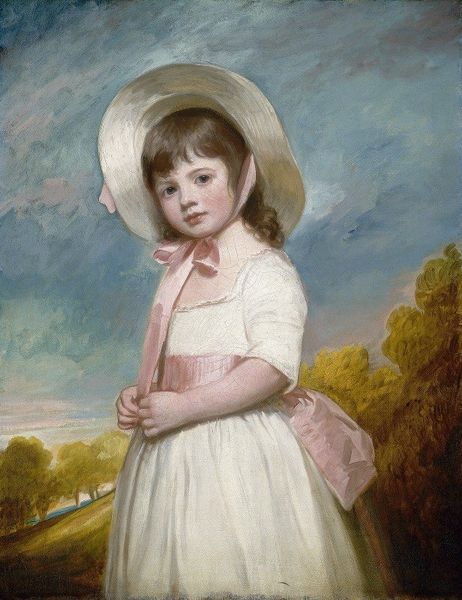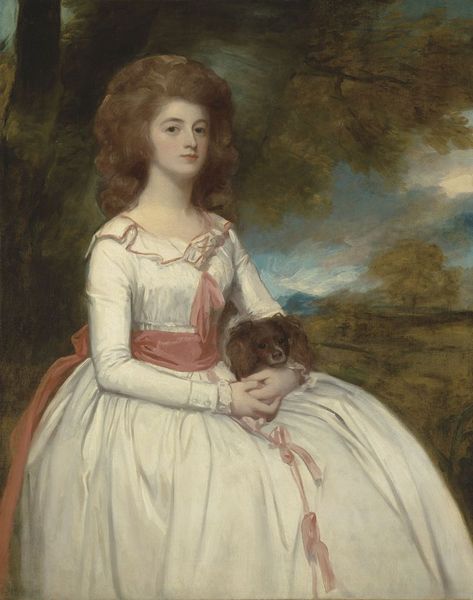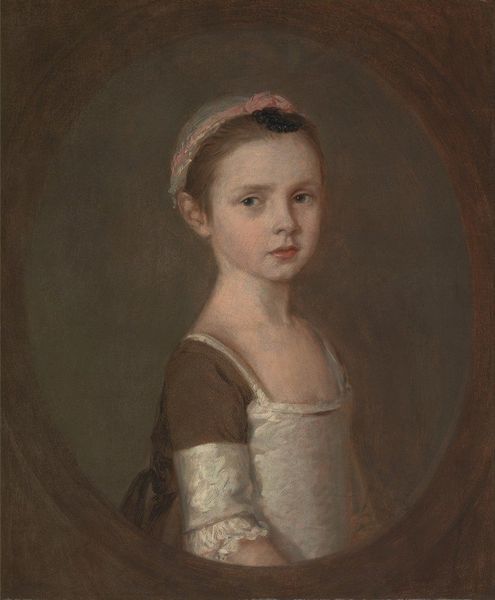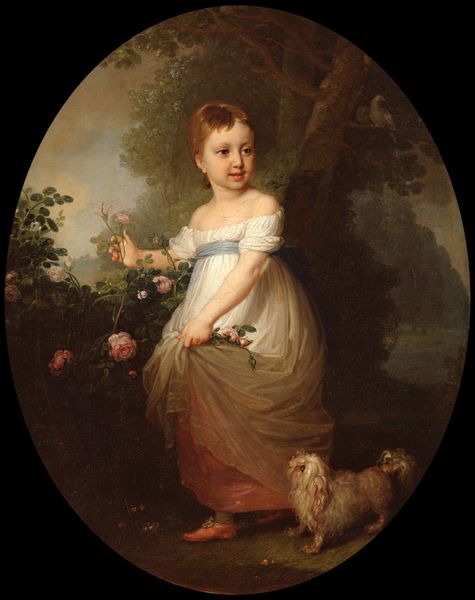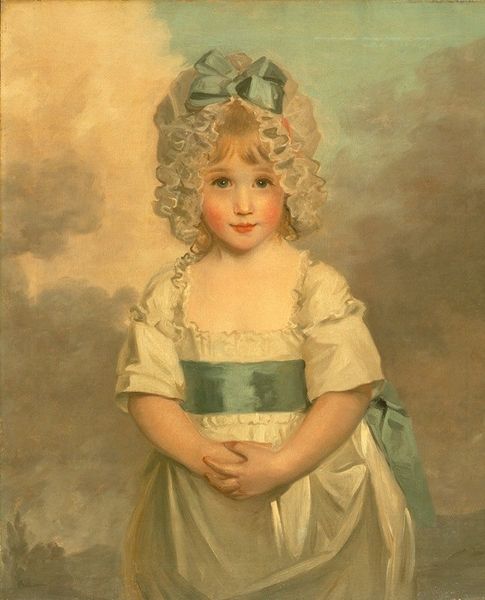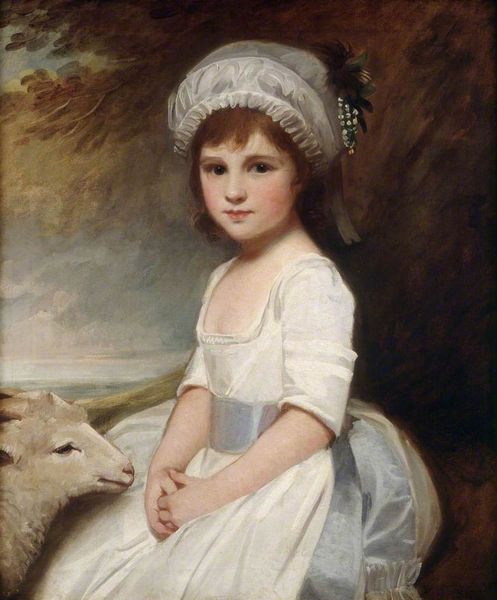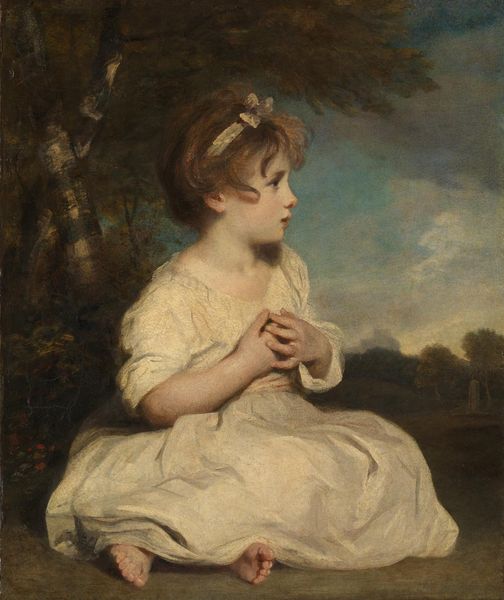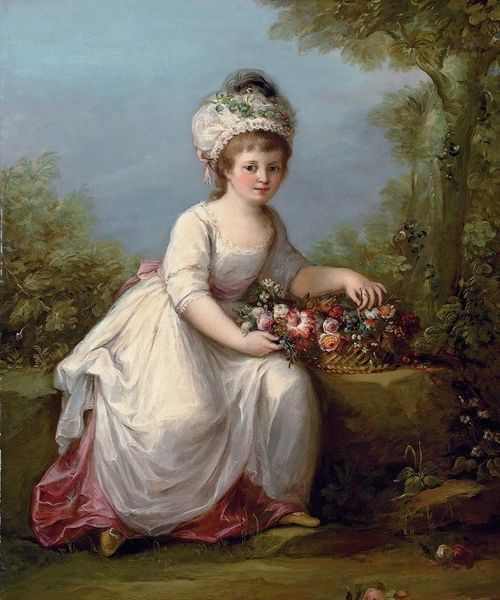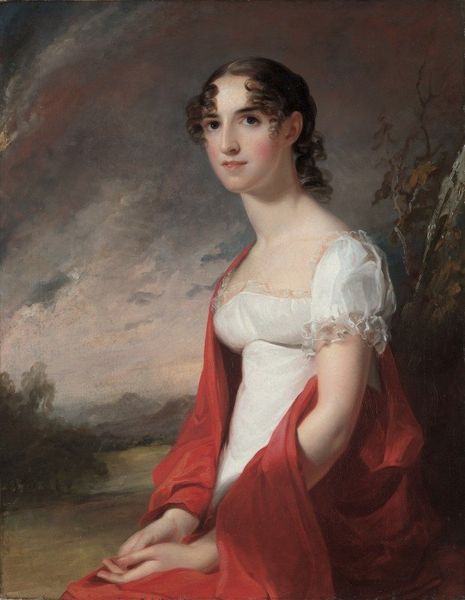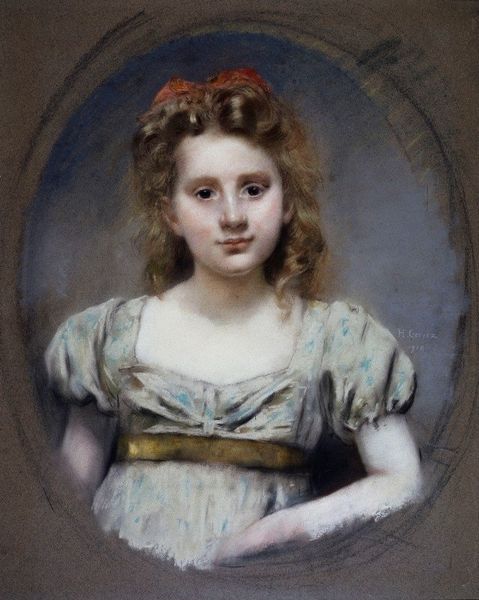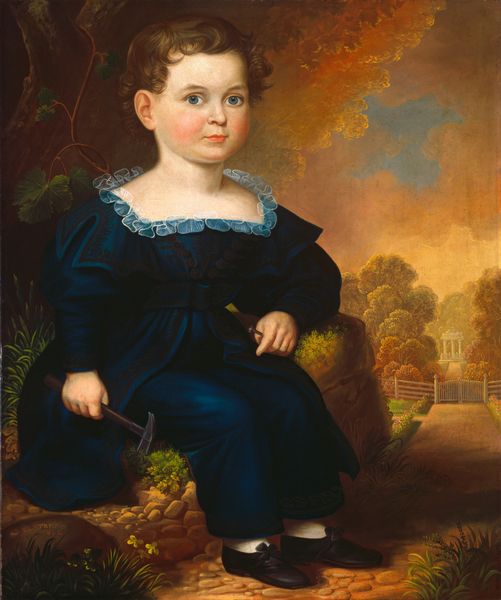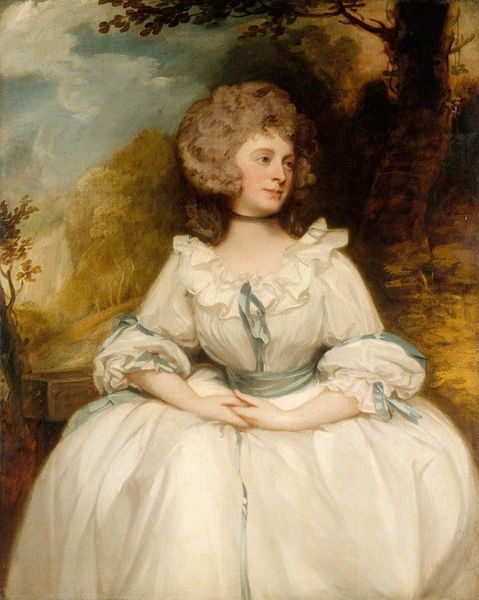
Copyright: Public Domain: Artvee
Editor: Here we have Thomas Gainsborough’s “Master John Heathcote,” painted around 1771 or 1772, an oil painting. It strikes me as rather serene. What captures your attention most in this piece? Curator: Ah, serenity! Precisely. Isn't it lovely how Gainsborough balances the formality of portraiture with a touch of wild, untamed nature? I feel like the blue sash is a stream running through a dreamy forest. Do you notice how the soft brushstrokes almost melt the figure into the background, blurring the lines between the boy and nature? Editor: I do. It's as if he’s part of the landscape. Almost dreamlike. Why do you think he chose a landscape backdrop instead of, say, an interior scene? Curator: That’s the magic of Gainsborough, isn’t it? I think he wanted to show Heathcote as a child of nature, a blossoming member of the landed gentry with roots firmly planted in his domain. The wispy, feathery brushstrokes almost tickle the canvas. There’s also a playfulness; look at that dashing hat casually hanging from his hand, or the charming, small bouquet! Don’t you think it almost makes us feel like we’ve interrupted a private ramble? Editor: I never thought about it like that. It's like he is not posing for the picture. More like captured on film. Thanks for shining a light on that. Curator: My pleasure! Every artwork is a puzzle with a multitude of exciting ways to solve it, isn’t it? This has been a fascinating venture!
Comments
No comments
Be the first to comment and join the conversation on the ultimate creative platform.
